Plantar Fasciitis Shoes
Depending on the specific needs of an individual, different types of shoes will be recommended. Here's what to look for in a shoe.
Depending on the specific needs of an individual, different types of shoes will be recommended. Here's what to look for in a shoe.
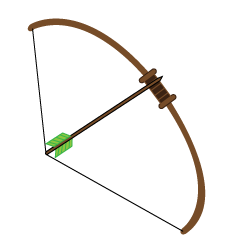
Arch support is all the talk on the internet, and it's been that way to help physicians make a little more money. It's not necessary, and will harm your feet if used for prolonged periods of time. The arch of your foot is naturally occuring and doesn't need extra support to hold it up. Any additional upward force on the plantar fascia will cause irritation and inflammation.
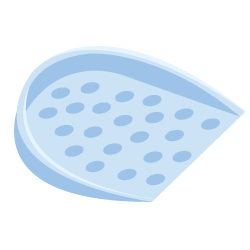
Heel support is a great way to reduce the impact pressure with every step taken. When a normal step is taken, the weight distribution of the foot is 50% on the heel and 50% on the metatarsals. Adding a little extra support will be a great way to reduce any pain.
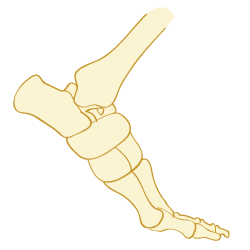
Your metatarsals, or more commonly known as the balls of your feet, will benefit greatly from having a little extra support under them. Relieving the pressure when a step is taken will help alleviate any extra strain on the plantar fascia.
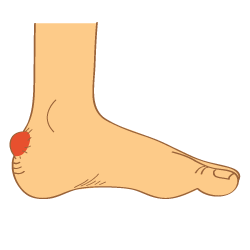
Having a pair of shoes that cause blisters on the back of your feet is a sign that the shoes are fitting improperly. Find a pair of shoes that cup the back of your ankle, but don't allow your heel to slide out. If the shoe is too tight, it will cause extra strain on your Achilles tendon.
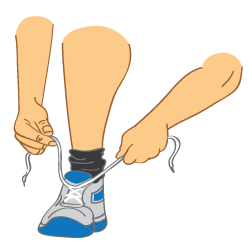
The top of your foot shouldn't have any pressure points when wearing the proper pair of shoes. If a pair of shoes is causing pain on your extensor tendon (the tendon that allows you to lift your toes up) then try different lacing patterns, or a shoe that has a higher top.
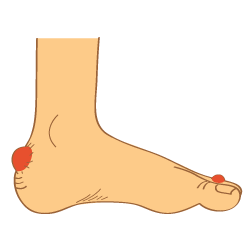
Your toes shouldn't be cramped in your shoes. Having shoes that are too tight can be the cause of minor toe deformities such as Hammer Toe or Haglunds Deformity. Having cramped toes will put extra strain on the metatarsal bones as well as extra strain on the plantar fascia, causing pain and inflammation.
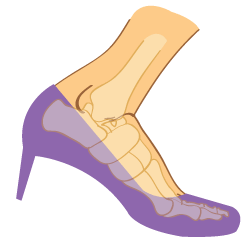
Wearing shoes that have a heel throws your weight distribution off with every step. The more height on the heel, the more weight is being placed on the metatarsals with every step. This will create inflammation in the plantar fascia over time, as well as inflammation in the Achilles tendon. While high heels complete the look of a great outfit, they should not be worn over long periods of time.